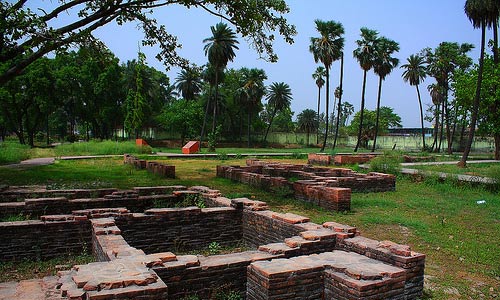Located in the eastern part of the city on the Kankarbagh road, Kumhrar is the site where archaeological remains of ancient Patliputra were excavated.
The archaeological findings ascribed to 600B.C. – 600A.D. belonging to four continuous periods.
The most important archaeological find is the remains of a hypostyle 80-pillared hall of Mauryan period. This 80-pillared hall at Kumhrar was discovered during excavations conducted by Archaeological Survey of India in the years 1912-15 under D. B. Spooner with the funds donated by Sir Ratan Tata. In this excavation traces of 72 pillars were found. Eight more pillars of the hall and four additional one belonging to the entrance or porch were exposed during further excavation in 1951-55 by K. P. Jayaswal research institute, Patna. Since then it is popularly referred as the ‘assembly hall of 80-pillars’. All the pillars were made of black spotted buff sandstone monoliths with a lustrous shine typical of the Mauryan period.
Regarding the nature of the hall, it has been variously assigned as the palace of King Asoka, audience hall, a pleasure hall or the conference hall for the third Buddhist council held at Patliputra in 250 B.C. during the reign of Mauryan emperor Asoka.
Arogya Vihara:
Besides 80-pillared assembly hall, the discovery of a monastery-cum-sanitarium or Arogya Vihara identified by a terracotta seal with the legend reading ‘Sri-Arogya-Vihare Bhikshusanghasya’ is an important find.
- PatnaBookFair 2022ALow Key Affair - December 13, 2022
- Barbeque Nation - November 22, 2021
- KFC Anisabad - October 22, 2021
